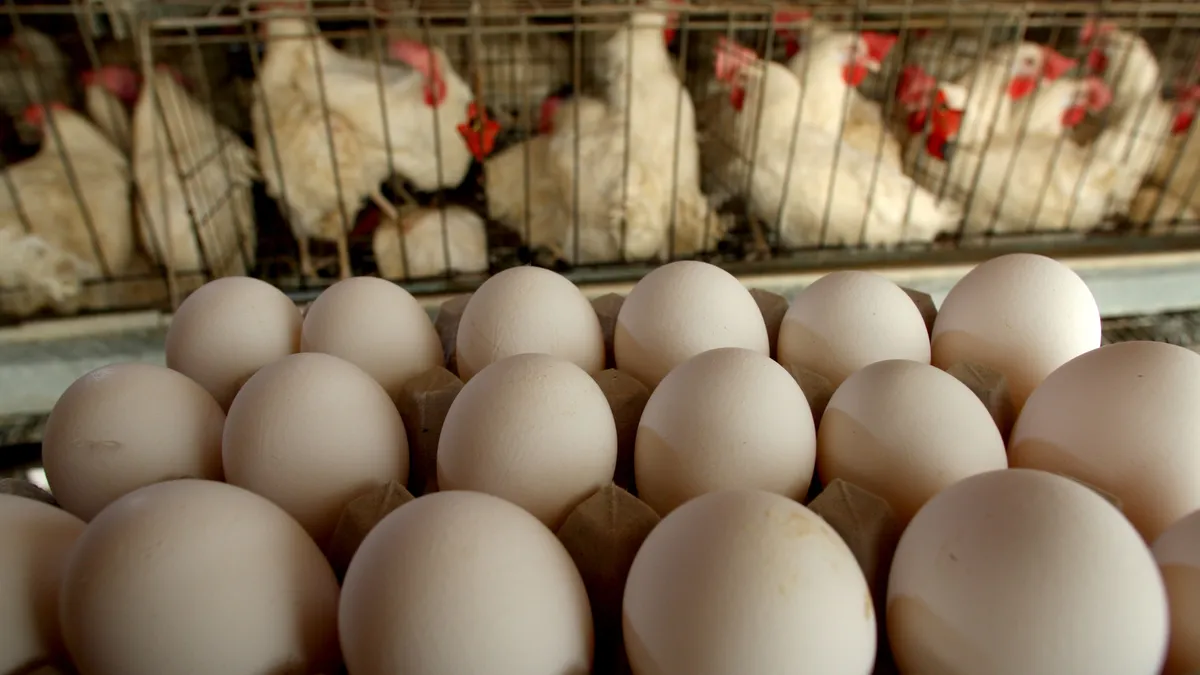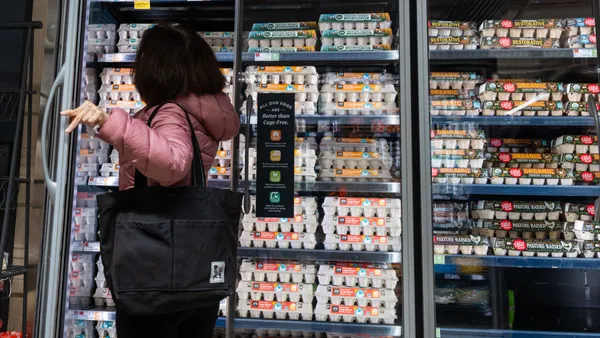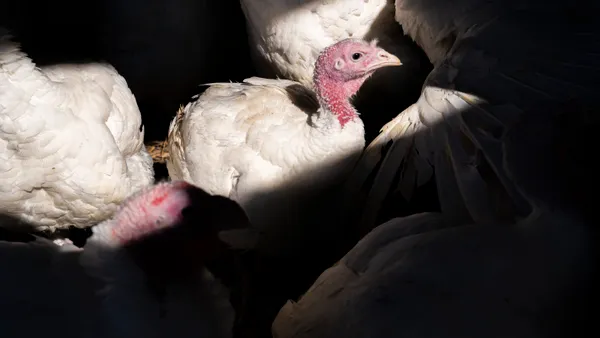Dive Brief
- U.S. egg production numbers are on the rise, signaling a rebuild after bird flu decimated commercial flocks last year and sent prices skyrocketing.
- A total of 9.37 billion eggs were produced in May, up 4% from last year, according to the U.S. Department of Agriculture. Egg production levels were down as much as 6% earlier this year, but started to show signs of improvement in April.
- Highly pathogenic avian influenza, a contagious disease often fatal to birds, has affected 325 U.S. commercial poultry flocks over the past year, but only seven cases have been reported since March. No cases were reported in the past 30 days.
Dive Insight
HPAI, often spread by migratory birds, affected more than 58 million commercial and wild birds in the past year, the country’s worst outbreak on record, according to USDA data. As cases spread, supplies tightened and prices soared, especially for eggs.
U.S. egg inventories were down 29% in December compared to the start of 2022. More than 43 million egg-laying hens died from disease or depopulation efforts last year. Wholesale egg prices surged 267% on increased holiday demand. They have since decreased as flocks are rebuilt and farmers adopt biosecurity measures as HPAI preventative.
After last year’s outbreak, Brian Earnest, lead economist, animal protein at CoBank, said he anticipated HPAI to be a year-round issue in 2023 with a lingering expectation that it would be back in full force, but “that does not seem to be the case.”
Instead, the rate of infection among domestic commercial poultry flocks has significantly weakened, according to USDA data. No U.S. cases have been reported among egg-laying birds since December.
“It appears that maybe commercial flocks are growing some immunity to it,” Earnest said.
Prices for large wholesale, cartoned eggs were $1.25 in New York last week, while the national average for conventional retail eggs was $1.88. Shoppers were paying on average $2.71 a dozen for large, grade A eggs this time last year.
As U.S. prices return to pre-pandemic levels, cases are cropping up in other parts of the world, including Chile and China, where human infections were reported in April. Last week, USDA said it would spend $502 million to prepare for the potential of additional HPAI cases.











